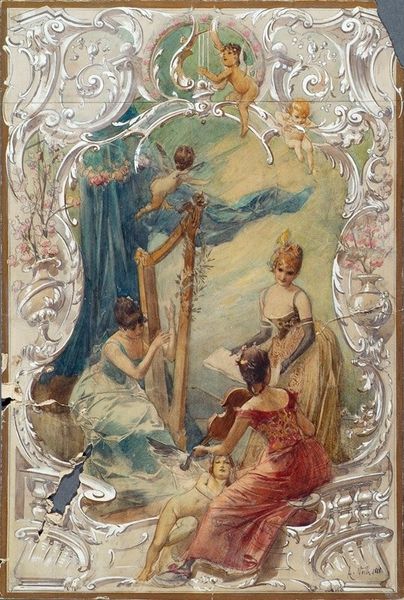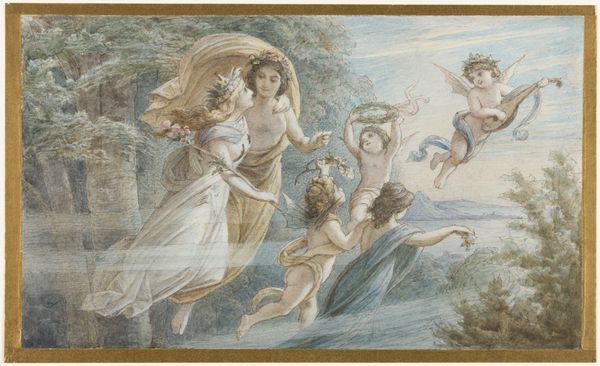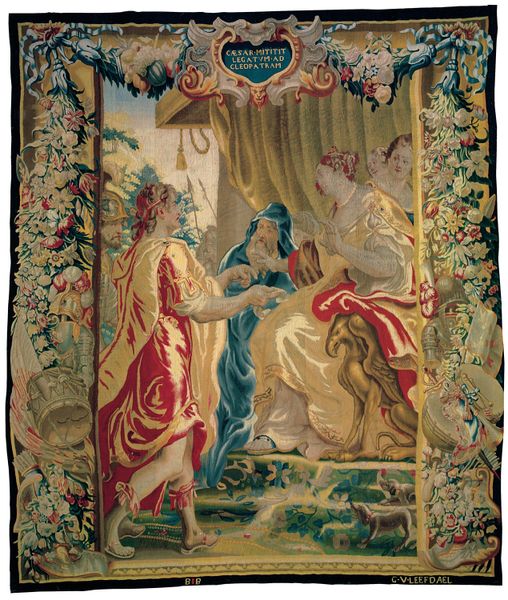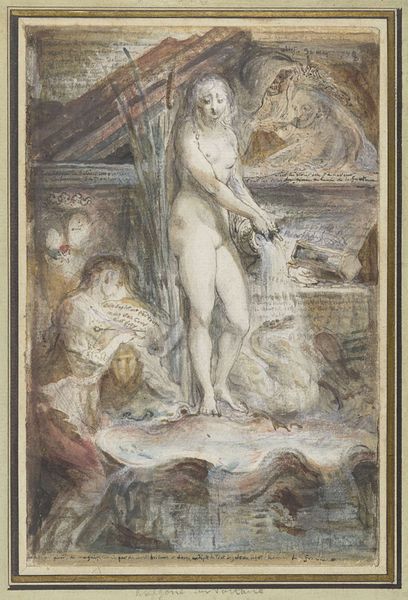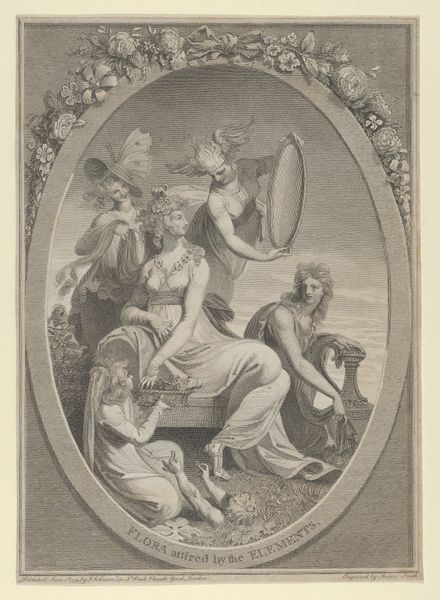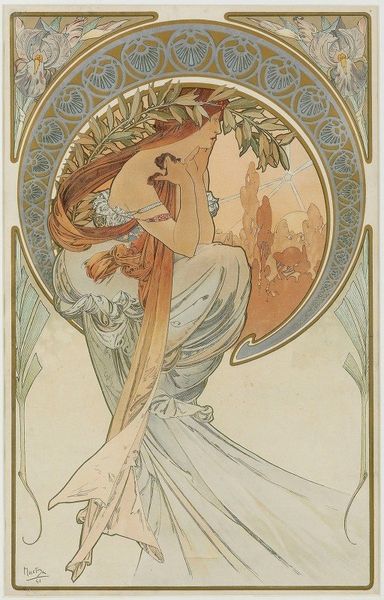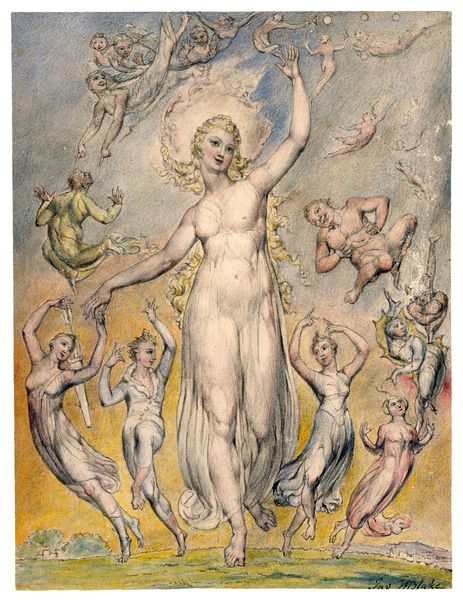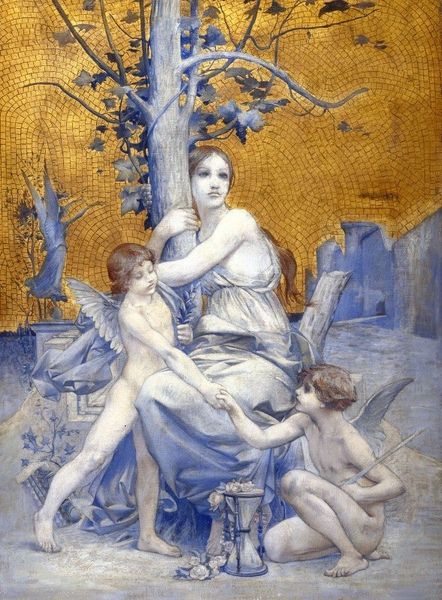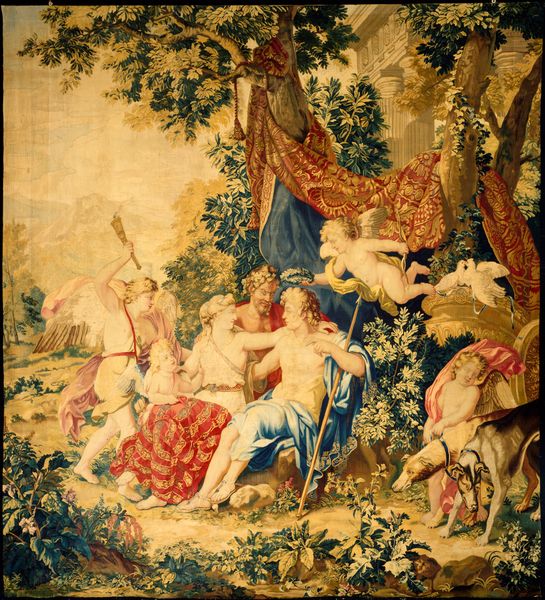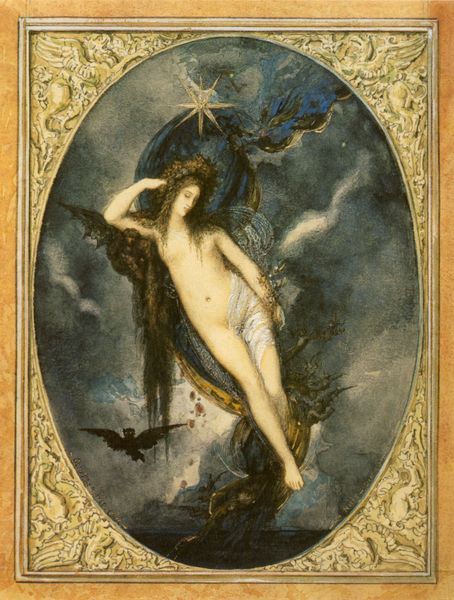
Copyright: Public Domain: Artvee
Eduard Veith created Tanz, which translates to Dance, at the turn of the 20th century. Veith was an Austrian artist known for decorative paintings that often portrayed women. Here, five women and a child are set against an ethereal backdrop, framed by a rococo-style border. The artist situates his figures on a balcony, but their light clothing and dynamic poses suggest they are not quite earthed. While the women are distinguished by their movement and garb, they all share a sense of lightness and gaiety. The naked child’s pose is contorted by the weight of the lute. Veith made this image during a time when there was a fascination with dance and movement in art, as well as a growing sense of freedom in social mores. Yet, the dancers are also presented for the viewer's pleasure. We're left to consider how this artwork simultaneously represents the liberation and the objectification of women during this period.
Comments
No comments
Be the first to comment and join the conversation on the ultimate creative platform.
